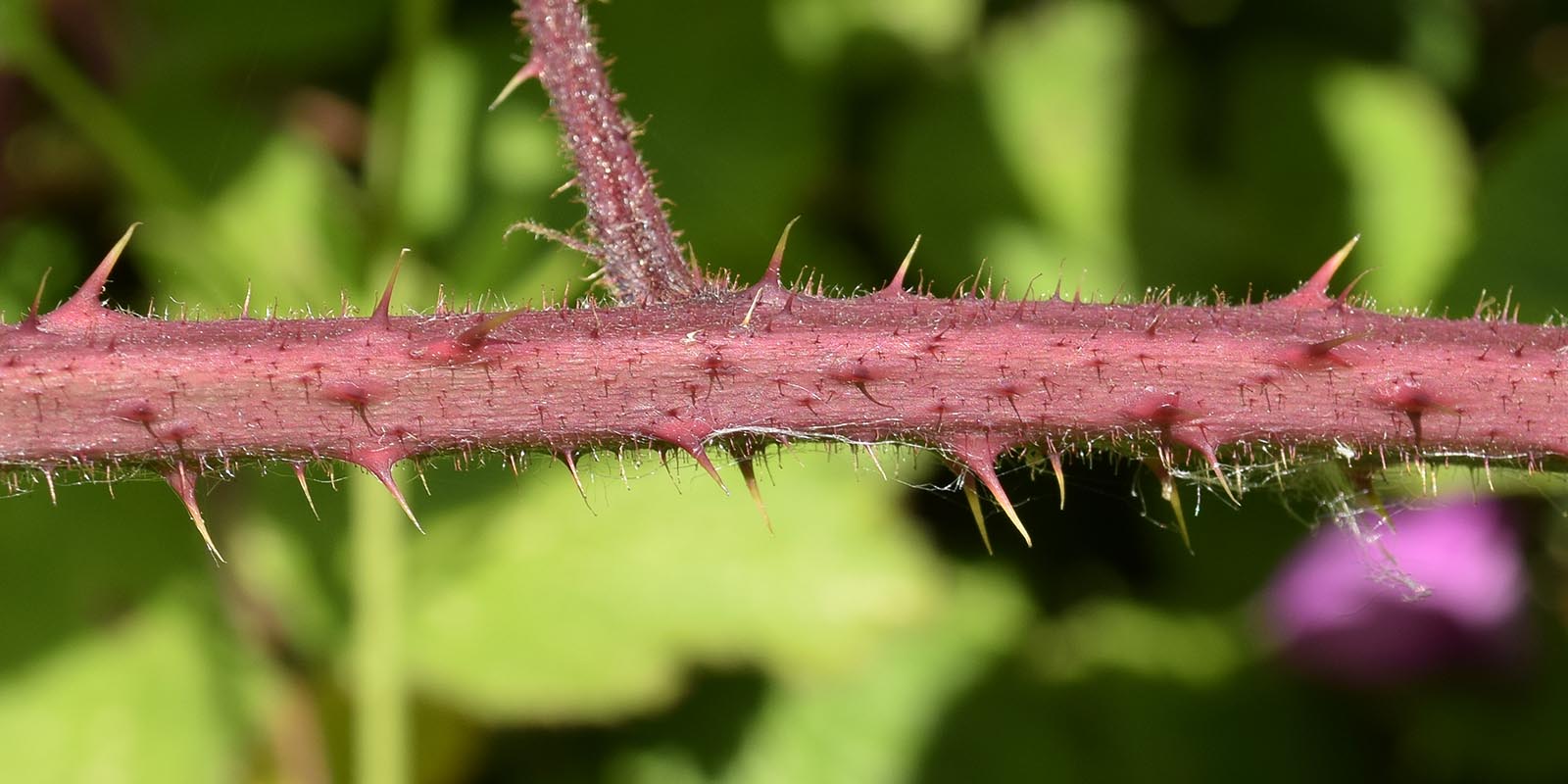
Rubus flexuosus – Series Radulae
back to Alphabetical index · Taxonomic index
This bramble is locally abundant or dominant in shady acidic woodlands, occurring over much of southern England, especially in the drier south-east. The zigzag (flexuose) stems, which give it its scientific name, are more markedly so than in any other species, and tend to creep over the ground. Occasionally it grows in the open. Other important identification features are the narrow pink petals and the large leaves which commonly have only three shallowly toothed leaflets.
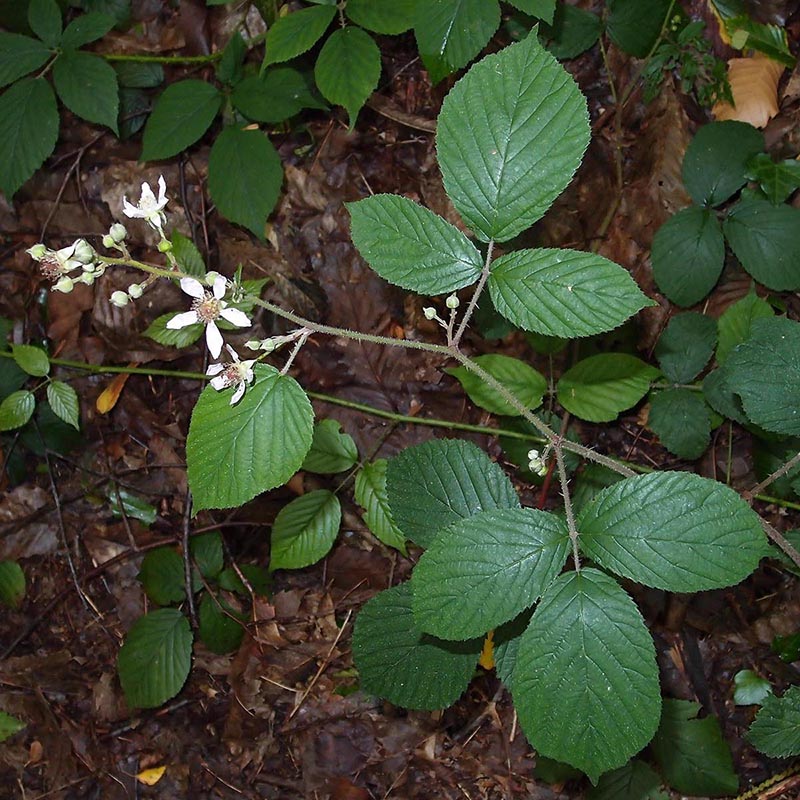
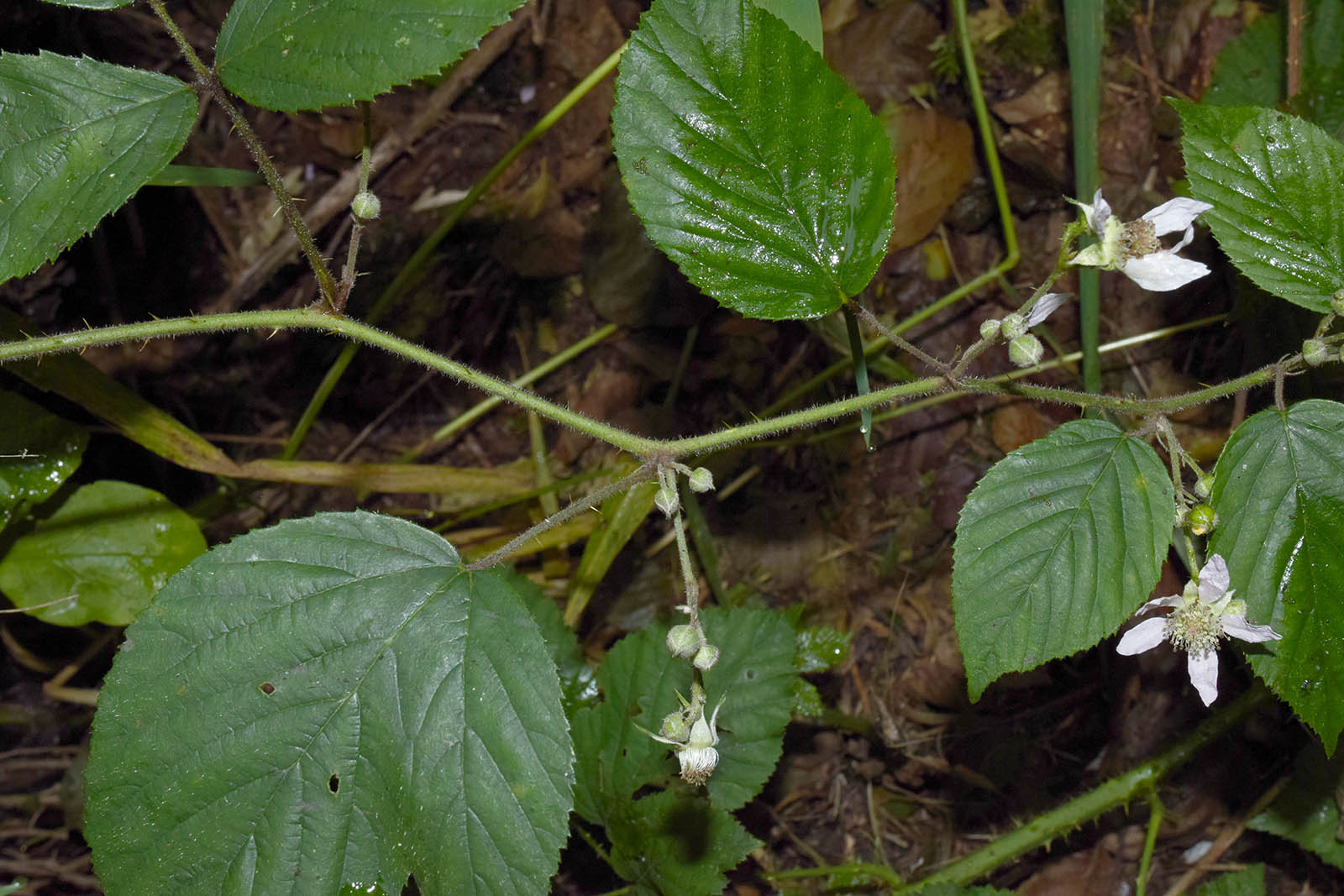
The panicle is narrow and elongated, which in the photo below, due to the faded petals, bears a resemblance to R. insectifolius, though that species has broader petals. A distinctive feature of the R. flexuosus panicle is the upper leaf, which often consists of a single, large leafet (see top photo above).
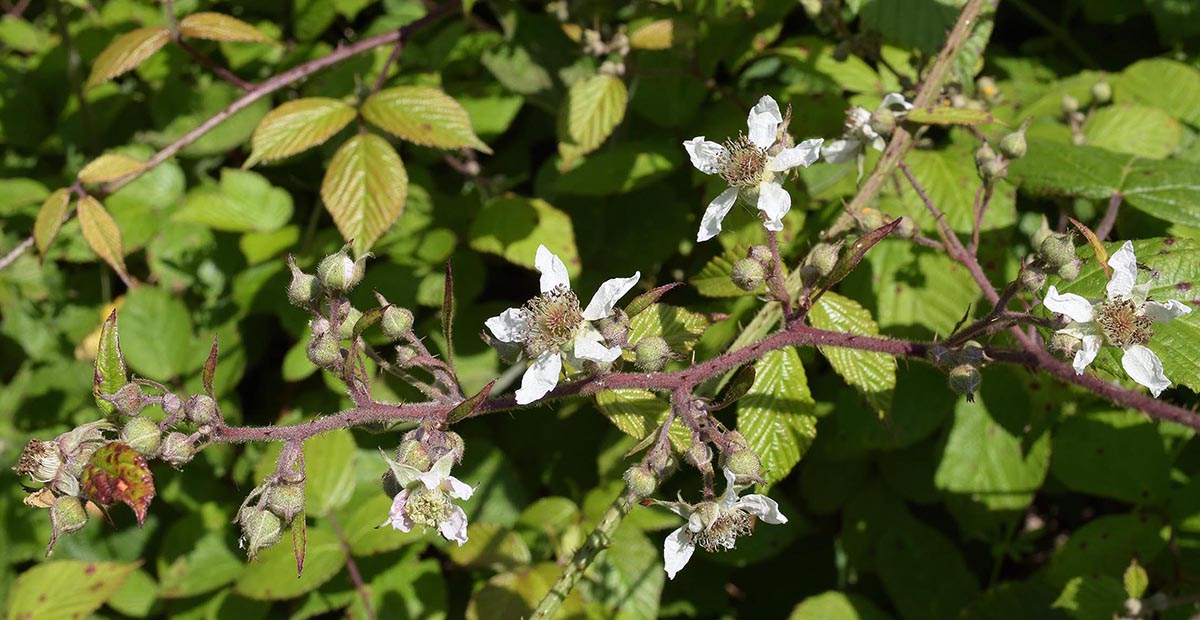
The flowers have red-based styles which are usually clearly visible due to the fairly short stamens. Petals are long, narrow, almost pointed and often notched at the end.
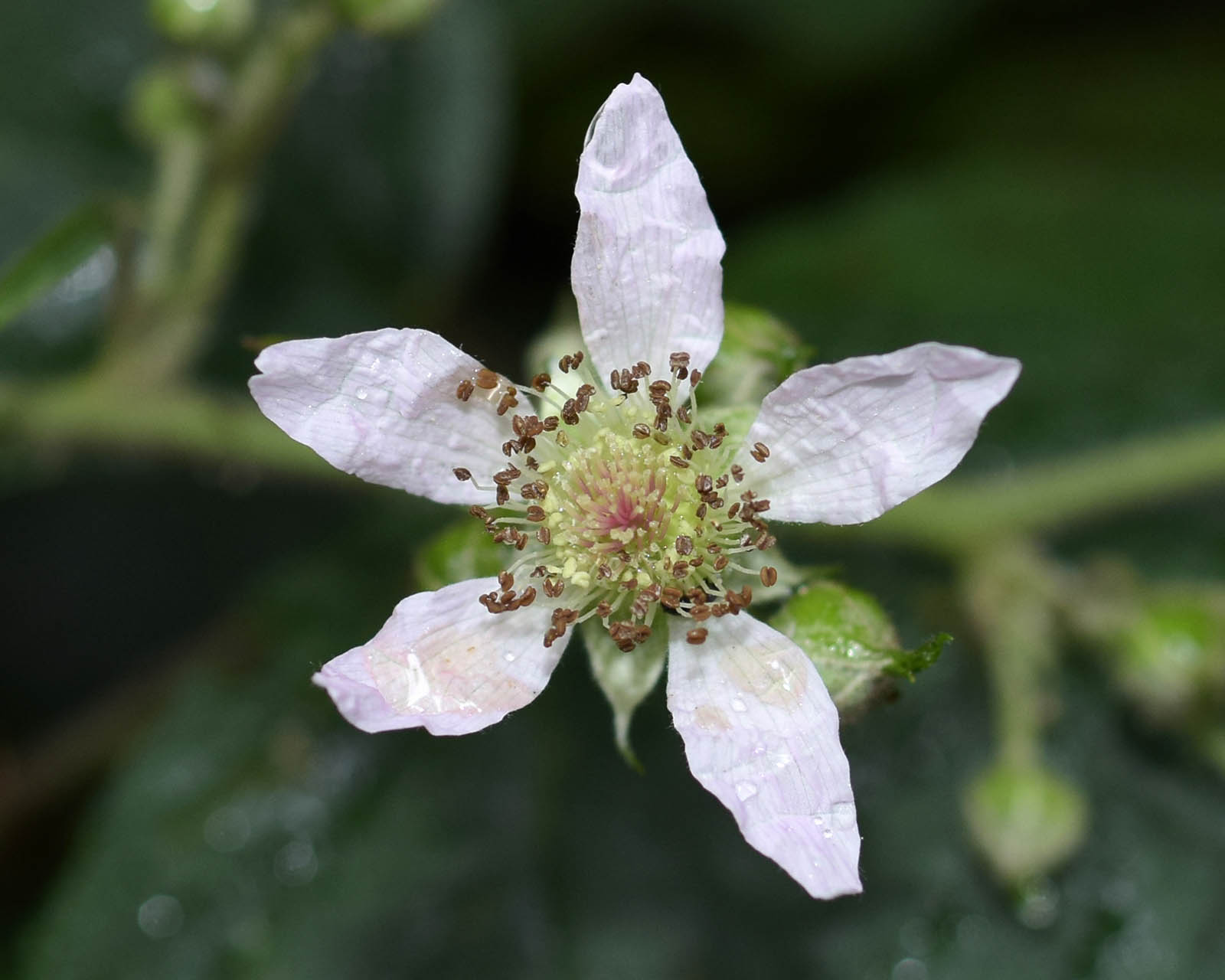


The rachis, pedicels and sepals are clothed with dense hairs and have numerous glands and small acicles. The rachis has inconspicuous fine prickles, which vary in number.

Leaves typically have 3 leaflets but 4 or 5 can occur on stems growing in the open. Leaflets are virtually glabrous above, bright green when fresh or exposed to the sun, darker mid-green in the shade. The terminal leaflet is slightly convex and broadly ovate to elliptical, or slightly obovate; the base is entire or nearly so and the tip is usually fairly long and acuminate, but can be attenuate (i.e. not clearly defined from the rest of the leaf). The toothing varies from shallowly serrate to moderate incised in some leaves.


Leaflets have a thin layer of appressed hairs below, giving a pale green felted appearance, though this can disappear in older leaves.


The non-flowering stems are usually quite slender, typically dull green in colour but become dark reddish-brown in full sun (as in the two photos below). They have narrow-based, finely-pointed main prickles on the angles and some on the faces, and are densely covered with fairly short glands and non-glandular acicles mixed with simple hairs.
